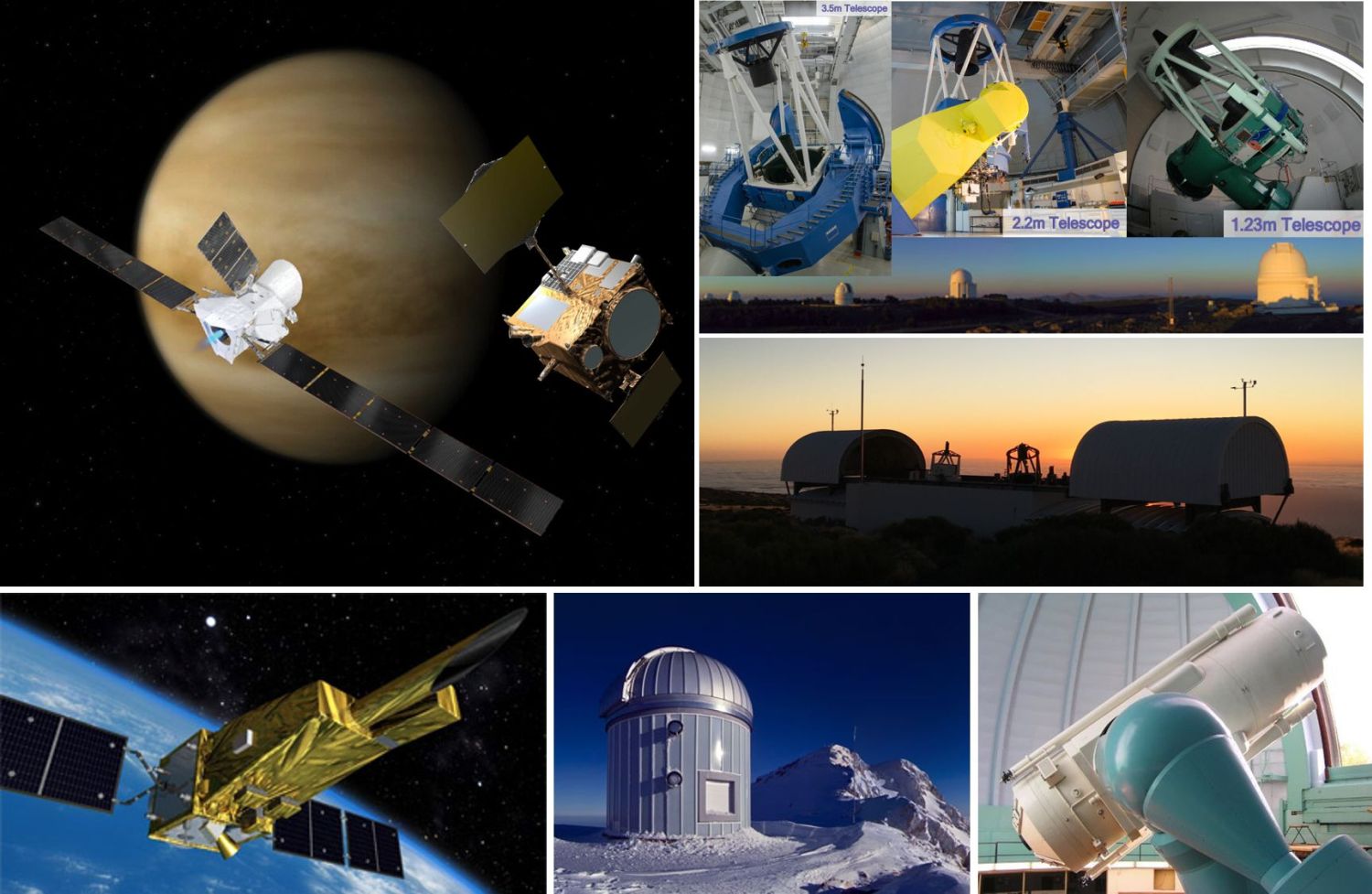Venus dayside observation campaign performed by multiple space missions and ground-based facilities
- 1Technische Universität Berlin, Zentrum für Astronomie und Astrophysik, Berlin, Germany (y.j.lee@astro.physik.tu-berlin.de)
- *A full list of authors appears at the end of the abstract
Despite a long history of Venus observations, we still miss information about the spectral and solar phase angle dependences of the Venus dayside. Recently, the Venus atmosphere was found to undergo temporal variations [1-3]. But variability of scattering properties of the Venus disk is not yet quantified, and only a long-term average is known [4-6]. In Aug-Sep 2020 we performed a unique Venus dayside campaign (Fig. 1) by 3 spacecraft and 6 ground-based telescopes over a broad spectral range (45-1700 nm) (Fig. 2). During the cruise to Mercury, BepiColombo’s UV spectrometer PHEBUS conducted Venus faraway observations; at the same time, the UV camera on board Akatsuki Venus orbiter and Earth-bound telescope facilities obtained Venus data (Fig. 2). The campaign was successful, and we acquired data from three locations simultaneously. In this presentation, we will introduce the campaign and its latest analysis results. We plan for more campaigns in future to observe Venus dayside from various solar phase angle locations.
Fig 1. Relative locations of BepiColombo (blue), Akatsuki Venus orbiter (black), and the direction to the Earth (green arrow), when the Venus dayside observation campaign was conducted (28 Aug - 2 Sep 2020). The +X is assigned to the Sun. The grey curve shows the trajectory of BepiColombo in Aug-Nov 2020 (top). The enlarged plot in the bottom shows the trajectory of Akatsuki around Venus on 28 Aug – 2 Sep. Red dots indicate the locations of BepiColombo and Akatsuki at 28 Aug 04:30 UT (BepiColombo is at 0.3 AU distance from Venus, and Akatsuki is at 0.34 million km distance) (Image credit: [7]).

Fig 2. Facilities participated the Venus dayside observation campaign in Aug-Sep 2020. From top left to clockwise: BepiColombo, Akatsuki, CAHA (3.5, 2.2, 1.23), STELLA, Perek telescope, T100, and Hisaki. (Image credit: ESA, JAXA, CAHA, STELLA, T100, Pereks telescope)
Antonio Garcı́a Muñoz, Eric Quémerais, Jean-Yves Chayfray, Rozenn Robidel, Atsushi Yamazaki, Go Murakami, Kei Masunaga, Stefano Mottola, Stephan Hellmich, Thomas Granzer, Murat Kaplan, Orhan Erece, Gilles Bergond, Eulalia Gallego, Ricardo Hueso, Petr Kabáth, Agustín Sánchez-Lavega, Myung-Jin Kim, Alexis Smith, Valeria Mangano, Thomas Widemann, Ko-ichiro Sugiyama, Shigeto Watanabe, Manabu Yamada, Takehiko Satoh, Masato Nakamura, Masataka Imai, Juan Cabrera, Heike Rauer
How to cite: Lee, Y. J. and the Venus Dayside Observation team: Venus dayside observation campaign performed by multiple space missions and ground-based facilities, European Planetary Science Congress 2021, online, 13–24 Sep 2021, EPSC2021-637, https://doi.org/10.5194/epsc2021-637, 2021.

